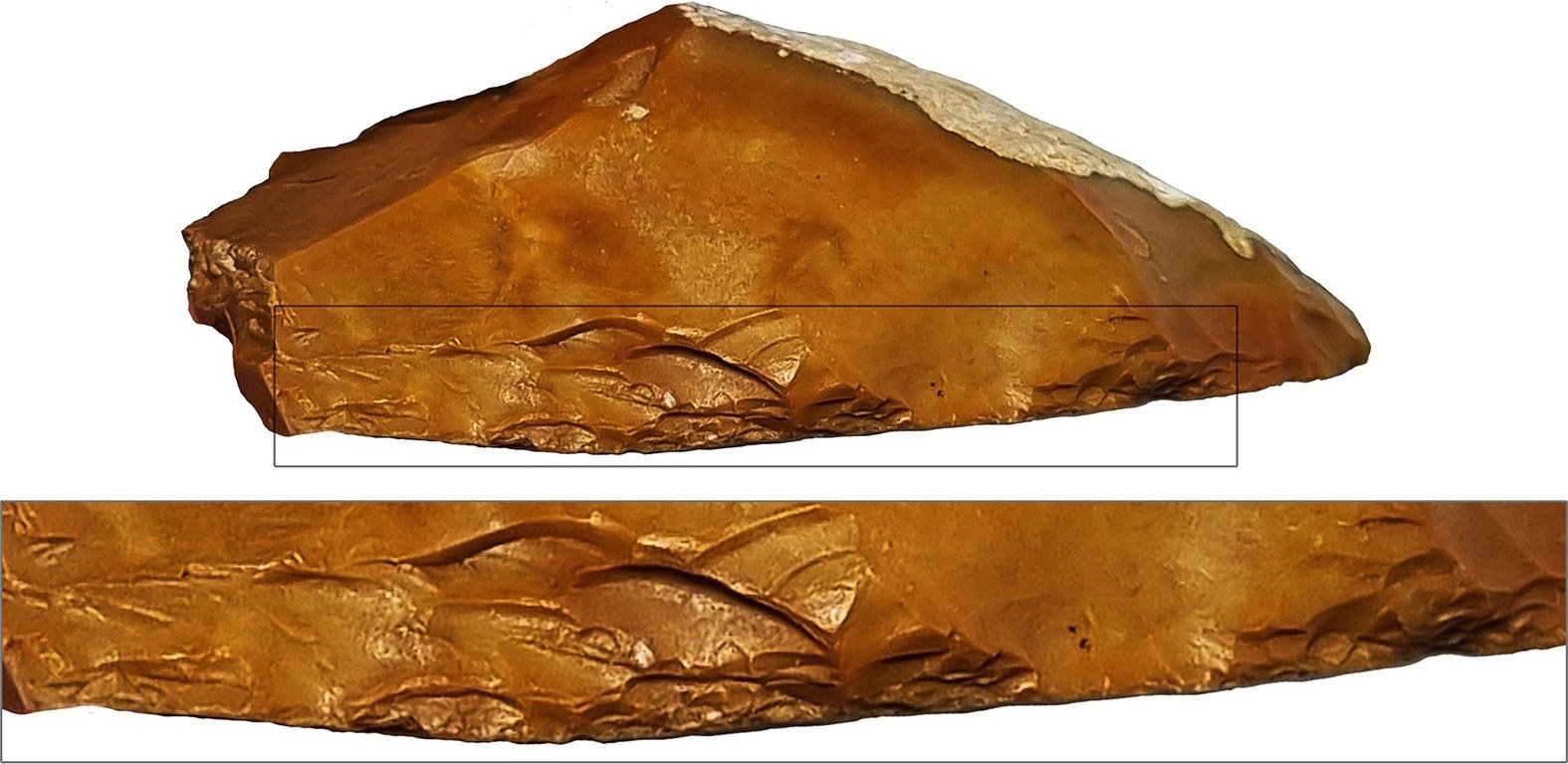A study by Tel Aviv University reveals the earliest use of Quina scrapers 400,000 years ago, reflecting a shift in hunting practices due to the extinction of large game like elephants. The research indicates a significant cultural and practical evolution in early human societies, linking tool technology with the sacred geographical sources of resources. A close look at a Quina-like scraper from Jaljulia. Credit: Tel Aviv University
A study reveals that 400,000 years ago, early humans developed Quina scrapers for hunting, adapting to the disappearance of elephants and forming a cultural link to the resource-rich Mountains of Samaria.
A recent study from Tel Aviv University has pinpointed the earliest global use of specific stone tools known as Quina scrapers, which date back 400,000 years. These tools were first discovered at a site in France and are named after it. They have been found at the ancient sites of Jaljulia and Qesem Cave. Quina scrapers are distinguished by their scalloped, sharp working edges, which were utilized for butchering fallow deer and processing their hides.
The researchers explain that after the elephants disappeared from the region, the ancient hunters were forced to make technological adaptations enabling them to hunt, butcher, and process much smaller and quicker game – fallow deer. The study also found that the unique tools were made of non-local flint procured from the Mountains of Samaria, which probably also served as the fallow deers’ calving area, about 20km east of Jaljulia and Qesem Cave.
Consequently, the researchers hypothesize that Mounts Ebal and Gerizim (near Nablus of today) were considered a source of plenty and held sacred by prehistoric hunters as early as the Paleolithic period. The study was led by Vlad Litov and Prof. Ran Barkai of Tel Aviv University’s Jacob M. Alkow Department of Archaeology and Ancient Near Eastern Cultures. The paper was published in Archaeologies.
Evolution of Hunting Tools
The researchers explain that for about a million years, starting 1.5 million years ago, early humans used stone tools called scrapers to process hides and scrape the flesh off the bones of mostly large game. In the Levant, they mainly hunted elephants and other large herbivores that provided most of the calories they needed. The study found, however, that about 400,000 years ago, following the elephants’ disappearance, hunters turned to a different kind of prey, considerably smaller and quicker than elephants – fallow deer.

Mt. Gerizim and Mt. Ebal. A view from the east. Credit: Dr. Shai Bar
Litov explains: “In this study, we tried to understand why stone tools changed during prehistoric times, with a focus on a technological change in scrapers in the Lower Paleolithic, about 400,000 years ago. We found a dramatic change in the human diet during this period, probably resulting from a change in the available fauna: the large game, particularly elephants, had disappeared, and humans were forced to hunt smaller animals, especially fallow deer. Clearly, butchering a large elephant is one thing, and processing a much smaller and more delicate fallow deer is quite a different challenge.

Prof. Ran Barkai. Credit: Tel Aviv University
Systematic processing of numerous fallow deer to compensate for a single elephant was a complex and demanding task which required the development of new implements. Consequently, we see the emergence of the new Quina scrapers, with a better-shaped, sharper, more uniform working edge compared to the simple scrapers used previously.”
Conclusion and Historical Significance
The study relies on findings from an excavation at the Jaljulia prehistoric site next to Highway 6 in central Israel, probably inhabited by humans of the homo erectus DOI: 10.1007/s11759-024-09493-w

















.png)


Discussion about this post